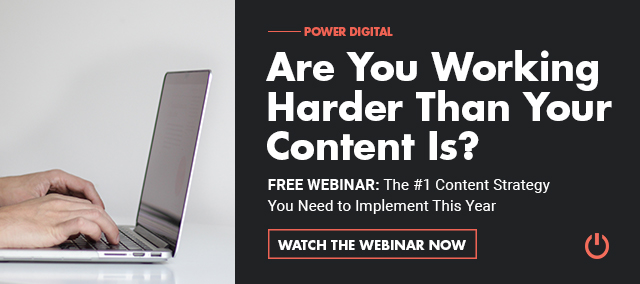Content Marketing for Ecommerce

The ecommerce industry is growing at an incredible rate, with many new entrepreneurs and retailers creating interactive online stores intended to capture customers and increase their business. In this busy environment, the success of your ecommerce website depends on a variety of factors, including brand visibility across multiple search engines to increase top of funnel awareness, SEO value to ensure that your content displays to your target market, and thought leadership to increase your ranking and provide value to both potential and existing customers – keeping them on your website and making it more likely that they will ultimately make a purchase from you, both now and in the future.
Simply creating a website and cataloging your products and/or services is not going to deliver the results you want as you face off against the many competitors for your business niche. In order to get the sales and return on investment (ROI) that you want, you need to establish your unique presence on the Internet through careful content marketing practices. Today’s rules for ecommerce content marketing have changed as retailers have come to understand the need to engage with their target audience from their very first interaction – at the top of the all-important sales funnel, when a prospective buyer first becomes aware of their need for your type of product or service.
Related: Content Marketing for B2B
A well-planned, targeted content marketing plan can help to attract the qualified leads you are looking for to your website – and keep them coming back. This, in turn, will improve your overall conversion rates and grow your online sales, increasing your ROI. Here are three areas for you to target in your online marketing efforts.
Focus on Top of Funnel Awareness
The more potential buyers you start out with, the more actual buyers you will end up with. Creating fresh, new, engaging content to draw first-time visitors to your website helps to build a relationship as you reach out to a new audience – and to potential new customers. This is essential for one simple reason: it’s good for your business. You need to create a positive initial, nonpromotional touch point in your funnel honestly and consistently. You can do this by engaging with your target market and sending out your message via social media, targeted Internet ads, and email campaigns. This is how you bring new users into your brand, educate them on your solutions, and capture more top of the funnel traffic.
Instead of simply focusing your efforts on getting potential customers to your checkout page, which is incredibly hard to do, you should begin by providing meaningful information focused on the needs of your ideal client, inviting them in to the top of your sales funnel – which is much easier to do than to get them directly to your shopping cart. This plays to today’s customers’ dislike of pushy sales tactics and their preference for helpful companies that give them the information they need to make an informed purchasing decision from a company and brand that they feel is worthy of their trust.
In today’s competitive ecommerce environment, your best bet is to develop several types of content in order to reach the widest audience possible with your content marketing efforts. A customer who buys frequently, has several questions about your brand or offerings, or wants to learn more about new products on your website each has different needs and interests. And there is also the issue of learning styles: some customers respond to written content, others to images, and still others need to hear the words spoken. Covering all of these bases with content that is focused on answering your customer’s questions and assuaging any doubts they may have is essential. Some of the many types of content you may want to consider including on your website or as part of your online marketing campaigns include:
Infographics
These presentations of valuable data or information focus on images that represent your products or services and why they would be useful to your customers. They may also include important how-tos and tips for getting the most from your offerings.
Memes
These funny videos or images with humorous text have become very popular among younger demographics and can be extremely useful, especially for social media campaigns.
Videos
Offering potential customers a brief, entertaining explanation of your products or services and how to use them encourages potential new customers to spend more time on your website or click through to it from a social media site such as YouTube.
Product Reviews and/or Client Testimonials
Providing potential customers with insights into how others feel about your company and its products or services can be instrumental in changing the minds of nervous customers, motivating them to trust your brand, and helping them decide to purchase your product or service.
eBooks
This type of downloadable digital content can help buyers find more detailed information on your specific product or service offering and how to use them to their advantage, helping to build their interest and trust in your brand.
Slideshows
A series of images and text content that allows users to quickly find the relevant information they are looking for about your products and services is another great way to capture their attention early on in the buying cycle.
Keep in mind that taking the time to develop multiple types of content can continue to work for you year after year, building your authority, creating an engaged audience, and boosting your SEO ratings – all of which contribute to more success for your business.
Related: How to Deliver Value at Every Stage of the Customer Journey
Build SEO Value
Providing a base of informative, useful content in a variety of formats is a good way to increase page views on your website and enhance its overall SEO performance while creating well-informed customers who are more likely to be interested in actually purchasing your products or services. Taking the time to optimize your content for Google and other search engines will also help you to build SEO value, assisting search engines in finding and indexing your site’s content so that they list it more prominently – and accurately – in response to buyers’ search queries. This in turn both improves your visibility across the Internet and allows targeted leads to find your brand, products, and services.
One of the marketing strategies you can use to boost your SEO is content cluster strategy. This strategy focuses on creating a central page as the main hub for specific content on an overarching topic, with additional content pages that are all related to that main topic linking back to both the central page and to each other. This linking sends a signal to search engines that the central page is an authority on the topic, and over time, that page begins to rank more highly for the topic it covers, increasing the overall site’s authority – and yours.
The content cluster strategy is a way of organizing a site’s content pages using keywords that tie into a specific theme. In order to draw in potential customers at the top of the sales funnel, informational keywords are used to capture them at the beginning of the buying cycle. For those at the end of the buying cycle who are ready to make a purchase, transactional keywords are used to rank for the main product or service pages of your site. These are focused on the actual purchase, as the buyer at this point knows what they want and is simply looking for the right product or solution for their needs. Boosting transactional page authority often has the most direct impact on sales, as buyers who are drawn to your website at this stage are ready to make a purchase.
Establish Thought Leadership
One of the many things that search engines are always looking for is content from companies, individuals, and brands that are recognized as authorities in a specific field or topic. Having your brand and/or business leaders establish thought leadership means offering new, user-friendly, value-added content on a regular basis so that your content will be included when search engines look for the most relevant results for their users. This means that in order to get your ecommerce site to rank on the first page of leading search engines, you need to provide valuable, unique, new content on a regular basis. Referring visitors to additional links with even more informative content that will help them gain additional knowledge about your topic is also important.
Establishing yourself or your business as a thought leader means making regular posts across multiple media channels and always offering up-to-date and/or new information and ideas. Content that leads to thought leadership should clearly demonstrate a specific point of view, narrowing down your area of expertise, and avoid offering information that is already readily available and/or too similar to that provided by other brands or companies. Because this can be a challenging endeavor, many companies hire marketing agencies to research and carefully craft this type of content.
Ecommerce has its own unique set of requirements when it comes to successful online marketing. While some strategies are the same for all types of Internet marketing, the unique concerns of ecommerce as they attempt to capture potential new customers in all parts in the sales funnel and during all stages of the buyers’ journey require them to create multipronged marketing endeavors in order to maximize their success.
Our Editorial Standards
Reviewed for Accuracy
Every piece is fact-checked for precision.
Up-to-Date Research
We reflect the latest trends and insights.
Credible References
Backed by trusted industry sources.
Actionable & Insight-Driven
Strategic takeaways for real results.








